Tibetan Wedding Customs and Ceremony
- Zoe
- Last Updated : 05/24/2024
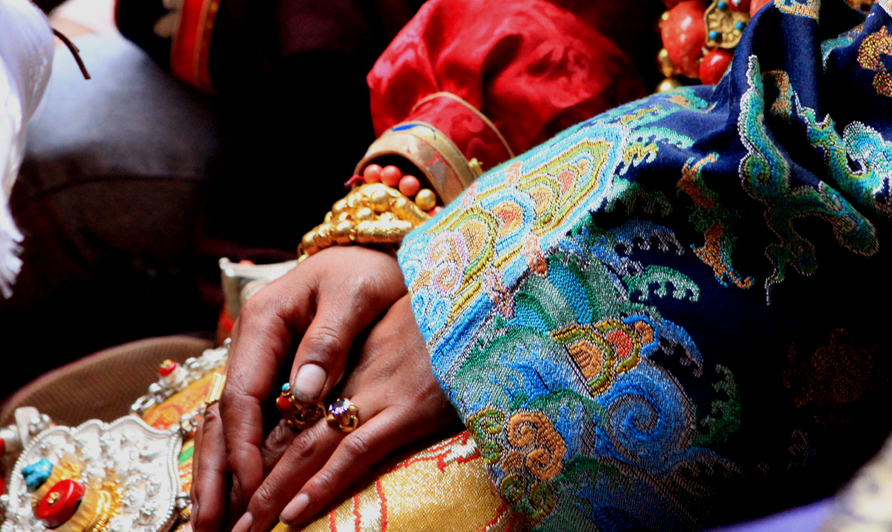
The people of Tibet have created a rich and splendid national culture. Among them, Tibetan marriage customs have distinctive local characteristics. There are old-style marriage customs and new-style marriage customs in Tibet. The old one is that the man and the woman are married under the arrangement of their parents. The new one is that men and women have the freedom to choose their spouses, ask for parental consent, and finally get married, but it still follows the process of the traditional Tibetan marriage customs. Below are various and colorful Tibetan marriage customs.
The Phenomenon of Tibetan Marriage
In old Tibet before 1951, in order to prevent the dispersion of property, there were marriages such as polyandry, polygamy, brother co-wife, and sister co-husband. The situation of polygamy mostly occurs in upper-class families, namely, lords and chieftains who expand their sphere of influence through marriage. The Yellow Sect of Tibetan Buddhism strictly prohibits monks from marrying wives, while monks of other sects are allowed to marry. Now there are three main types of marriage in Tibet: monogamy, polygamy, and polyandry.
Monogamy
Among Tibetan families, monogamous families are the main form of marriage in Tibet, while the other two are secondary.
Polygamy
Before 1951, there were many polygamous noble families mainly due to political and economic reasons. Because through marriage, they can consolidate their property status. The wives of such families were usually from different chieftains or tribes. There are also polygamous marriages existing in civilian families. The husbands usually cohabit with his wife’s sisters after marrying his wife, thus forming a de facto husband and wife relationship. In this kind of family, the sisters share a husband together, and their statuses are equal.
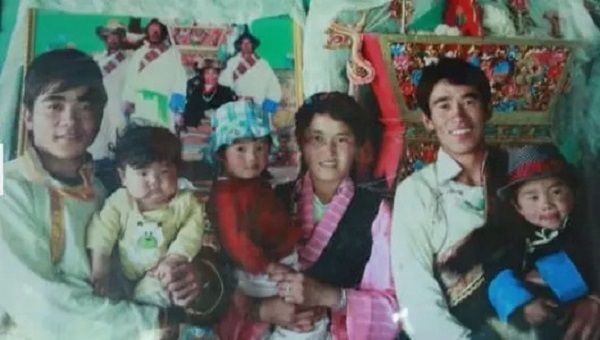
Polyandry
Polyandry has a history of thousands of years in Tibet, mainly in rural areas. This is a way to protect family property from being scattered. Tibet is located on a plateau, with a little arable land. Coupled with the harsh living environment, the strength of small families is very weak. And this system can strengthen the family. In the northern and southern foothills of the Himalayas, where living environment and culture are relatively similar, polyandry families still exist in many places till now.
The Etiquette of Tibetan Wedding
Nowadays, parents do not arrange marriages. But locals still basically follow the procedures of a marriage proposal, engagement and holding wedding ceremony.
Make a Proposal
This is the first procedure that must be done. Before proposing to marry, one should first check if the boy and girl's zodiacs are compatible, and then send Hada to the girl's family to formally propose the marriage.
Engagement
If both families agree to the marriage, they will send a family member to choose an auspicious day and ask a talented person who can draft poetry to draft the engagement letter. The content is that men and women must respect and love each other after marriage, consider for each other, respect their elders, and have noble morals, etc. This kind of engagement letter is written in the form of poetry and can be read aloud.
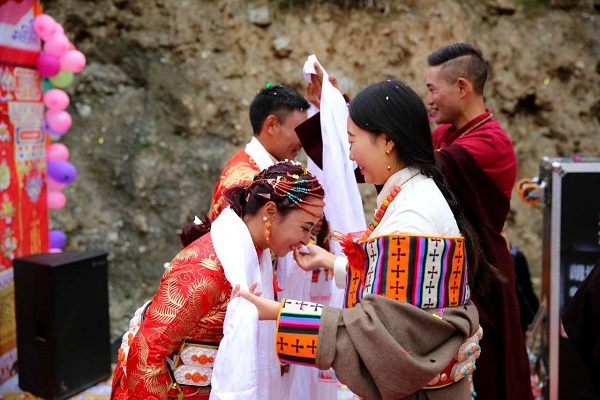
On the day of the engagement, the man's family should offer a khata and generous gifts to the woman's family members. And the woman's family should prepare tea, wine, banquet, etc. to treat the man's family warmly. During the banquet, family members of each family will enter the main hall and take their seats one by one. And the host's family would serve Chema(a kind of mascot), offer tea and toast for the bride and groom. The proposed family will present a gift again and also repays the expenses spent on the day, as well as a piece of "apron", to show gratitude for the mother's breeding. After toasting, the host would put two copies of the engagement letter on a tray. One witness representing a family would read aloud, and another witness standing for the other family would proofread it carefully. After reading, the witnesses put both families' seals on the engagement letters and handed over them to the bride and groom's father separately. Then the parents of the two families offered khatas to the witnesses as a sign of gratitude. During the engagement ceremony, young men and women will not participate, only their families attending. When the man’s family leaves in the evening, the woman’s family will present a khata to each visitor.
Hold Wedding Ceremony
The man’s family will ask the astrologer to calculate the date of marriage. On the previous day of the marriage ceremony, the man’s family will send the wedding dress and jewelry wrapped in silk to the woman's home to let the bride wear. On the day of the wedding, the man’s family needs to find a person of identity, bring a team of men with some horses and colorful arrows with many decorations, and pull a pregnant mare that matches the wife’s zodiac for the bride to ride. Before the arrival of the horse team, the woman’s family should hold a farewell party by presenting Chema, tea and wine. And the woman's family would assign some close relatives to send off the bride. When the bride goes out of her home, her family members stand upstairs with colored arrows in one hand and lamb shank in the other and shout: Don't take away my family's blessings. They would repeat several times until the bride walks away.
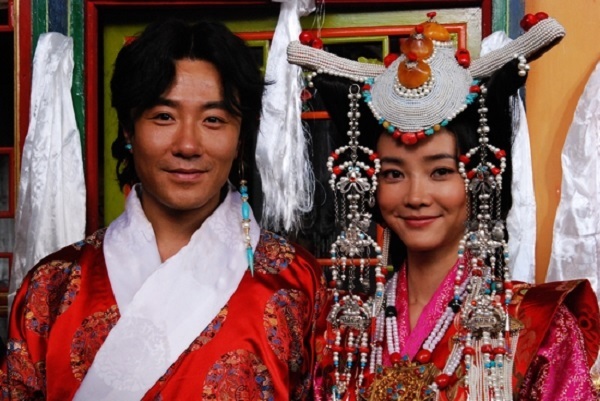
When the horse team is marching, the entourages should sing songs, and the bride should cry. Along the way, the man's family needs to wait on the roadside to toast the horse team three times. If encounter someone with water or firewood on the back, they think it's the most auspicious sign and they should dismount the horse to offer a khata to the passerby. If encounter people carrying patients, dumping remnants, or taking empty baskets on the road, it's considered unlucky. After the marriage ceremony, they should ask monks to recite sutras to eliminate disasters.
Before the bride arrives, the man's family should dress up the gate and prepare a cushion for the bride to dismount. The cushion is a pocket with highland barley and wheat, covered with colorful brocade, on which the symbol "卐" is painted on the surface with wheat grains. The man's family will greet the bride at the door holding "Chema" and highland barley wine.
The traditional introductory ceremony is extremely cumbersome. From dismounting, entering, going upstairs to entering the hall, every time, the family members would sing a song and present Khata. After the bride enters the gate of the groom's house, she should first pray to the guardian deity of the family. Afterward, the bride should sit next to her groom, as well as her relatives to have dinner and exchange gifts. Then the couples will be led to the top floor of the house, and a lama will chant sutras to ask the family deity to protect the bride. Finally, a prayer flag is raised on the roof, and the representative of the bride’s family will issue a statement: From now on, the bride and other members of the groom’s family enjoy equal authority.
The wedding is usually held for 5 to 15 days, depending on the financial situation of the family. On the days of the wedding, the family would invite related people to perform Tibetan opera and sing songs for fun.
After the Wedding
On the first day after marriage, the bride and groom should get up very early and worship in front of the family deity. In the first month after marriage, the bride is not allowed to enter the room of her parents-in-law. One month later, the parents of the groom will formally meet the new couple in their room. After that, the bride can go in and out of the room of her parents-in-law at will.
After 3 or 6 months of the newly-wedding, the bride and groom will return to the bride's home to stay for a while. The time of return must be determined by a monk. And the bride’s family should prepare barley, a painting of a swastika, etc. to welcome them. They will also bring gifts to their father-in-law and mother-in-law on behalf of the groom's parents. The bride and groom should also pray before the guardian deity of the bride's family. Only in this way can the whole wedding be considered complete.
Restrictions of Old-style Tibetan Marriage
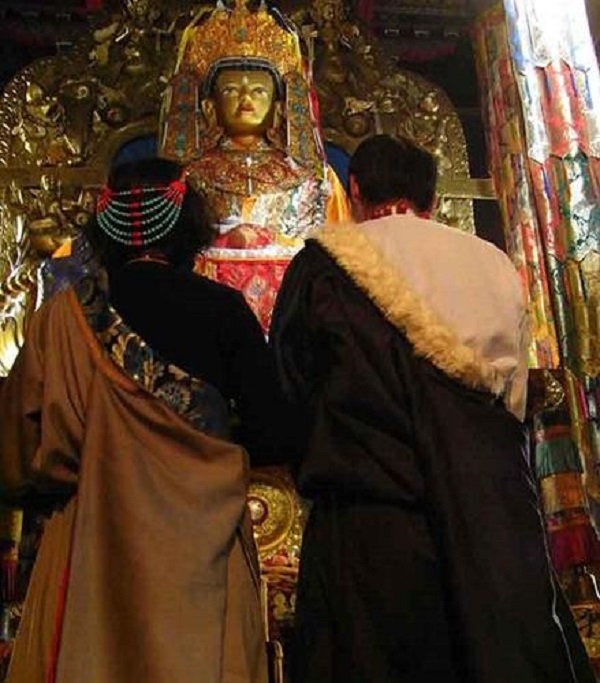
In old Tibet, marriages were mostly arranged by the parents. Parents had the responsibility of raising and resolving their children's marriage, and children had the duty to obey and finial their parents. In the past, when looking for a daughter-in-law or son-in-law, children had no right to butt in, especially for women, who often don't know what their husbands look like before the marriage.
After 1951, there were mainly independent marriages. Men and women fall in love first, then inform their parents, and then go through traditional procedures, and finally get married. The old-style marriage has many constraints, however, there are also reasonable points, as listed below.
First, the aristocracy and the populace could not unite by marriage. In the past, people paid great attention to matching families of equal standing, so men and women were not able to marry their loved ones. During matchmaking, the primary consideration was status and wealth, then morality and appearance. At that time, the children of the nobles could marry each other, however, the rich and the poor could never love each other. Eg. The children of serfs could not marry the children of the lord.
Secondly, there's the constraint of superstition. Before match-making, the matchmaker would ask for the zodiac signs of both sides in advance, then bring their info to the living Buddha or someone specializing in calendar calculations, and see if the man and woman are suitable for each other. If the two people were destined, they could get engaged. However, if their zodiac signs were incompatible, the parents won't agree even if the man and the woman were willing to get engaged.
Thirdly, as ordinary serfs, their marriages were constrained by their own lords. If the master disagreed, the serf couldn't get married. Generally speaking, marriage between serfs of the same lord was applicable, while marriage between serfs of different lords was related to the increase or decrease of serfs, which is very difficult as they should obtain the consent of two lords and their parents.
Fourth, there implemented a hierarchical system in old Tibet. The butchers, blacksmiths, and beggars belonged to the bottom of society. They should marry someone of their own class, and people from other classes would not marry them.
In addition, Tibetans also prohibit close relatives from marrying. Patrilineal relatives must never marry, and maternal relatives can only get married after four generations. Certainly, in remote mountainous areas where transportation is inconvenient with few inhabitants, there are also close relatives who get married. As a result, most offspring were born with developmental defects, either fools or lame.
Email response within 0.5~24 hours.


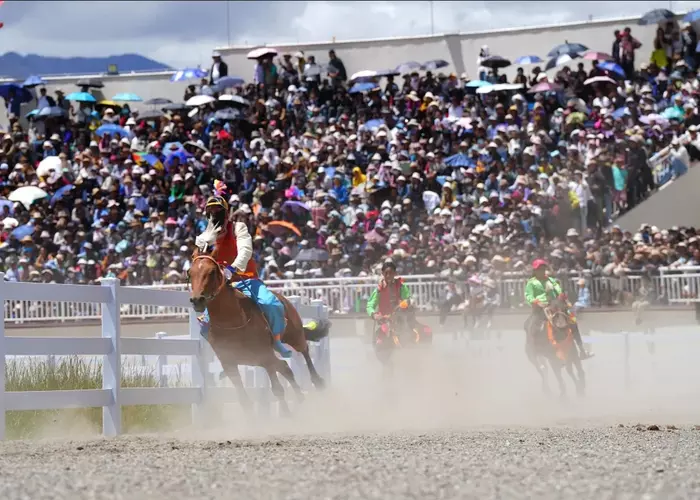

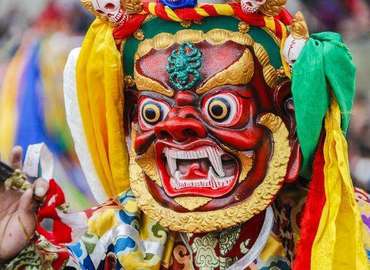
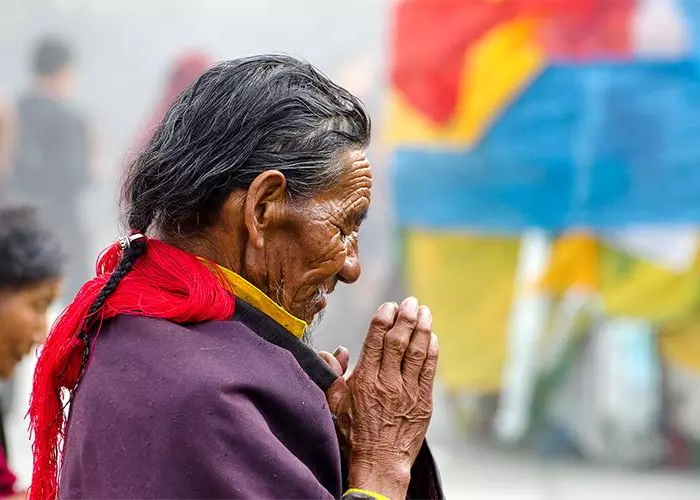

Typically Asked Questions from Our Clients
Asked by Leil***
Hello, we are looking to find someone plan a wedding in Tibet. Wed like a traditional experience and clothes. It will just be for two of us.
Dear Leil**,
For weddings in Tibet, do you refer to the ceremony? I have checked with local people and they said it's difficult to have such one for tourists. Can you consider taking some nice Tibetan-style wedding photos?
By the way, will you visit Tibet? And how long would you stay here? I can plan a trip for you.